After breakfast Peter and I decided to visit Ancient Rome, So we set out to make our first stop The Colosseum or also known as the Flavian Amphitheatre.
The Colosseum is an elliptical amphitheatre in the centre of the city
. Built of concrete and stone, it is the largest amphitheatre ever built and is considered one of the greatest works of architecture and engineering. Construction began under the emperor Vespasian in 72 AD, and was completed in 80 AD under his successor and heir Titus. Further modifications were made during the reign of Domitian (81–96).
The Colosseum could hold, it is estimated, between 50,000 and 80,000 spectators, having an average audience of some 65,000; it was used for gladiatorial contests and public spectacles such as mock sea battles, animal hunts, executions, re-enactments of famous battles, and dramas based on Classical Mythology. The building ceased to be used for entertainment in the early medieval era. It was later reused for such purposes as housing, workshops, quarters for a religious order, a fortress, a quarry and a Christian shrine. In the 21st century it was partially ruined because of damage caused by devastating earthquakes and stone-robbers, The Colosseum is an iconic symbol of Imperial Rome
. It is one of Rome's most popular tourist attractions and has close connections with the Roman Catholic Church, as each Good Friday the Pope leads a torchlit "Way of the Cross" procession that starts in the area around The Colosseum.
Peter andI had our photograph taken with two Gladiators, these people in Gladiator costumes dress up for a living, so alway ask how much it is to have your picture taken with them. In this case the Men asked for a donation and I gave him €5.
After walking around The Colosseum, we walked passed the Arch of Constantine erected by the Roman Senate to commemorate Constantine l's victory over Maxentius at the battle of Milvian Bridge on October 28, 312. Dedicated in 315, it is the latest of the existing triumphal arches in Rome, and the only one to make extensive use of spoila, re-using several major reliefs from 2nd century imperial monuments, which give a striking and famous stylistic contrast to the sculpture newly created for the arch.
We walked along what was Circus Maximus, is an ancient Roman chariot racing stadium and mass entertainment venue
. Situated in the valley between the Aventine and Palatine hills, it was the first and largest stadium in ancient Rome and its later Empire. It measured 621 m (2,037 ft) in length and 118 m (387 ft) in width, and could accommodate over 150,000 spectators. In its fully developed form, it became the model for circuses throughout the Roman Empire. The site is now a public park.
We finally reached Santa Maria in Cosmedin, built in the 8th century during the Byzantine Papacy over the remains of the Temple Hercules Pompeiani in the Forum Boarium and of the Statio annonae, one of the food distribution centres of ancient Rome. A deaconry was a place where charity distributions were given to the poor.
In the portico of Santa Maria in Comedian, is La Bocca della Verita, (Mouth of Truth) is an image, carved from Pavnazza marble, of a man-like face. The sculpture is thought to be part of a first-century ancient Roman fountain, or perhaps a manhole cover, portraying one of several possible pagan gods, probably Oceanus
. Most Romans believe that the 'Bocca' represents the ancient god of the River Tiber.
The most famous characteristic of the Mouth, however, is its role as a lie detector. Starting from the Middle Ages, it was believed that if one told a lie with one's hand in the mouth of the sculpture, it would be bitten off. There was also a medieval legend, wrongly believed to originate with the Roman poet Virgil, of an adulterous empress who managed to deceive her husband in a trial using the Mouth. This is an infrequent subject in medieval and Renaissance art, forming part of the Power of Women literary topos. The piece was placed in the Portico of the Santa Maria in Cosmedin in the 17th century.
From this point we cross the road to visit The Temple of Hercules, is a monopteros, a round temple of Greek 'peripteral' design completely encircled by a colonnade. This layout caused it to be mistaken for a Temple of Vesta until it was correctly identified by Napoleon's Prefect of Rome, Camille de Tounon
. Dating from the later 2nd century BC, the temple is 14.8 m in diameter and consists of a circular cella within a concentric ring of twenty Corinthian columns 10.66 m tall, resting on a tuff foundation. These elements supported an architrave and roof, which have disappeared. The current tile roof was added later. It was once erroneously known as the Temple of Neptune.
We walk up to the Tiber river bank to see The Pons Aemillus, today called Ponte Rotto, is the oldest Roman stone bridge. Preceded by a wooden version, it was rebuilt in stone in the 2nd century BC. It once spanned the Tiber, connecting the Forum Boarium with Trastevere; a single arch in mid-river is all that remains today, lending the bridge its name Ponte Rotto ("Broken bridge").
The sight seeing brought on an appetite, finding a place to eat we had lunch and then continued seeing more sights. We start off by visiting San Pietro ai Vincoli, best known for being the home of Michael Angelo's statue of Moses. Pope Julius ll commissioned Michelangelo to build his tomb in 1505 and it was finally completed in 1545; Julius II died in 1513
.
San Pietro ai Vincoli was rebuilt on older foundations in 432–440 to house the relic of the chains that bound saint Peter when he was imprisoned in Jerusalem.
Our next stop was the Vittorio Emanuele ll Monument, is a monument built in honour of Victor Emmanuele, the first king of a unified Italy. The eclectic structure was designed by Giuseppe Sacconi in 1885 and completed in 1925. The monument, the largest in Rome, was controversial since its construction destroyed a large area of the Capitoline Hill with a Medieval neighbourhood for its sake.
We continued onto the magnificent Roman temple of Gods know as Pantheon. Built on the site of an earlier building commissioned by Marcus Agrippa during the reign of Augustus (27 BC – 14 AD). The present building was completed by the emperor Hadrian and probably dedicated about 126 AD. The building is circular with a portico of large granite Corinthian columns under a pediment
. A rectangular vestibule links the porch to the rotunda, which is under a coffered concrete dome, with a central opening to the sky. Almost two thousand years after it was built, the Pantheon's dome is still the world's largest unreinforced concrete dome. The height to the dome and the diameter of the interior circle are the same, 43.3 metres (142 ft).It is one of the best-preserved of all Ancient Roman buildings. It has been in continuous use throughout its history, and since the 7th century, the Pantheon has been used as a church dedicated to St. Mary" and the Martyrs" but informally known as "Santa Maria Rotonda".
We then visit Piazza Navona, built on the site of the Stadium of Domitian, built in 1st century AD, and follows the form of the open space of the stadium. The ancient Romans went there to watch the agones ("games"), and hence it was known as "Circus Agonalis" ("competition arena").
In the Piazza there are a number of beautiful fountains, the famous Fontana dei Quattro Fiumi (Fountain of the Four Rivers), (1651) by Gian Lorenzo Bernini
. The Fontana dei Moro with a basin and four Tritons sculpted by Giacomo della Porta (1575) to which, in 1673, Bernini added a statue of a Moor, or African, wrestling with a dolphin. The Fountain of Neptune (1574) also created by Giacomo della Porta; the statue of Neptune, by Antonio Della Bitta, was added in 1878 to create a balance with La Fontana dei Moro.
Whilst in the Piazza we visit Santa Maria dell Anima, It was founded during the course of the 14th century by Dutch merchants, who at that time belonged to the Holy Roman Empire. In the course of the 15th century, it became the national church of the whole Holy Roman Empire in Rome and henceforth the national church of Germany and hospice of German-speaking people in Rome.
The final stop was to visit The Temple of Hadrian is a temple to the deified Hadrian on the Campus Martius built by his adoptive son and successor Antonius Pius in 145 and now incorporated into a later building in the Piazza di Pietra
. One wall of the Cella survives, together with eleven of the 15-metre-high Corinthian Columns from the external colonnade, on a 4 m high peperino base.
Peter and I shopped a little more before returning to 'La famiglia' restaurant for dinner and then returning to Windrose Hotel for a good nights rest. Did our feet need rest!
Ancient Rome
Wednesday, September 14, 2011
 Rome, Lazio, Italy
Rome, Lazio, Italy
Other Entries
-
23Delights of Taormina
Aug 2817 days prior Taormina, Italyphoto_camera13videocam 0comment 4
Taormina, Italyphoto_camera13videocam 0comment 4 -
24Transit to Montepulciano
Aug 2916 days prior Montepulciano, Italyphoto_camera25videocam 0comment 0
Montepulciano, Italyphoto_camera25videocam 0comment 0 -
25The Journey Begins
Aug 3015 days prior Pienza, Italyphoto_camera22videocam 0comment 0
Pienza, Italyphoto_camera22videocam 0comment 0 -
26Immersing The Body in the Thermal Springs.
Aug 3114 days prior Bagno Vignoni, Italyphoto_camera11videocam 0comment 1
Bagno Vignoni, Italyphoto_camera11videocam 0comment 1 -
27From Thermal Springs to Chants in an Abbey.
Sep 0113 days prior Montalcino, Italyphoto_camera15videocam 0comment 4
Montalcino, Italyphoto_camera15videocam 0comment 4 -
28Tranquility and Peace.
Sep 0212 days prior Buonconvento, Italyphoto_camera8videocam 0comment 0
Buonconvento, Italyphoto_camera8videocam 0comment 0 -
29Beautiful Abbey and Gardens
Sep 0311 days prior Buonconvento, Italyphoto_camera13videocam 0comment 0
Buonconvento, Italyphoto_camera13videocam 0comment 0 -
30Three Remain, Eight Moved On.
Sep 0410 days prior Murlo, Italyphoto_camera22videocam 0comment 0
Murlo, Italyphoto_camera22videocam 0comment 0 -
31Beautiful Siena
Sep 059 days prior Siena, Italyphoto_camera10videocam 0comment 0
Siena, Italyphoto_camera10videocam 0comment 0 -
32Another day of Churches!
Sep 068 days prior Siena, Italyphoto_camera11videocam 0comment 2
Siena, Italyphoto_camera11videocam 0comment 2 -
33Goodbye Siena, Hello Milano.
Sep 077 days prior Milan, Italyphoto_camera2videocam 0comment 0
Milan, Italyphoto_camera2videocam 0comment 0 -
34Exploring Milano, the Fashion Capital.
Sep 086 days prior Milan, Italyphoto_camera14videocam 0comment 0
Milan, Italyphoto_camera14videocam 0comment 0 -
35Chilling Out in Milan
Sep 095 days prior Milan, Italyphoto_camera3videocam 0comment 1
Milan, Italyphoto_camera3videocam 0comment 1 -
36Road Trip.
Sep 104 days prior Pieve Emanuele, Italyphoto_camera3videocam 0comment 0
Pieve Emanuele, Italyphoto_camera3videocam 0comment 0 -
37From the Table to the Nudist Beach.
Sep 113 days prior Milan, Italyphoto_camera1videocam 0comment 1
Milan, Italyphoto_camera1videocam 0comment 1 -
38All Roads Lead to Rome
Sep 122 days prior Rome, Italyphoto_camera2videocam 0comment 1
Rome, Italyphoto_camera2videocam 0comment 1 -
39Discovering Rome.
Sep 131 day prior Rome, Italyphoto_camera15videocam 0comment 4
Rome, Italyphoto_camera15videocam 0comment 4 -
40Ancient Rome
Sep 14 Rome, Italyphoto_camera16videocam 0comment 2
Rome, Italyphoto_camera16videocam 0comment 2 -
41Last Day in Rome
Sep 151 day later Rome, Italyphoto_camera17videocam 0comment 3
Rome, Italyphoto_camera17videocam 0comment 3 -
42Home Sweet Home!
Sep 162 days later Melbourne, Australiaphoto_camera1videocam 0comment 0
Melbourne, Australiaphoto_camera1videocam 0comment 0
Comments
2025-05-22
Comment code: Ask author if the code is blank

 Rome, Lazio, Italy
Rome, Lazio, Italy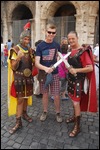
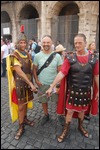
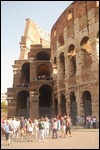
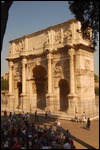

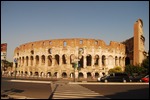
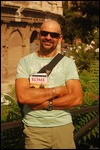
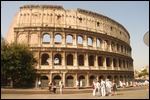
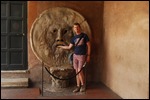


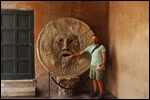
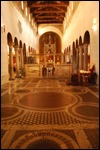
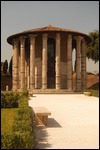
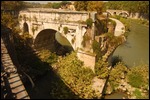
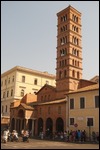
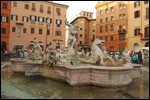
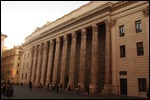
Miss Caroline
2015-09-04
Hi Jojo and Peter,
OMGosh... You gave me goosebumps reading about the Gladiators...
How amazing this place must have been!!
Great pictures too and what an experience....
Can't wait to hear all about it.
Love and light to you both... xoxox